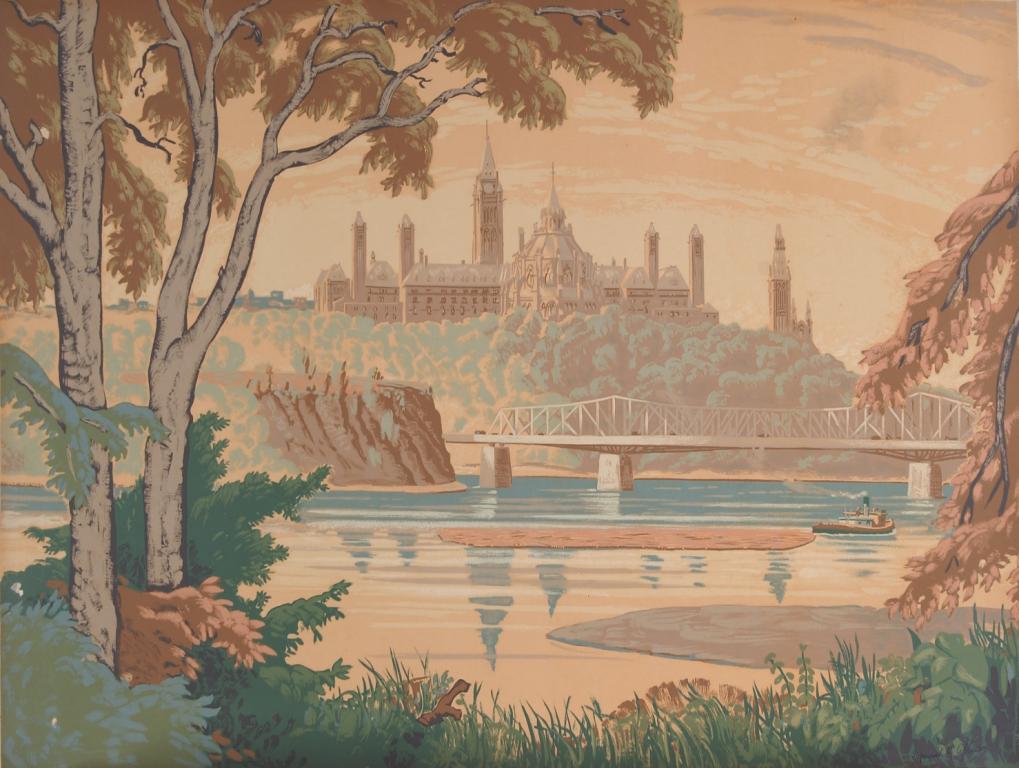Canadian artist Stanley Frances Turner was born in Aylesbury, England in 1883, and studied at the South Kensington School of Art in London, England. He immigrated to Canada in 1903, and started farming in Saskatchewan, while continuing to make sketches.
In 1911 he moved to Toronto and joined the advertising department of the Timothy Eaton Company. In 1913, Turner won first prize for the Eaton Jubliee Cover competition, and in 1918 he joined the design and advertising firm of Rous and Mann Press Ltd, working under Franklin H. Carmichael.
He received an Eaton scholarship to attend the Ontario College of Art in Toronto, where he studied with George Reid and J.W. Beatty. Turner is perhaps best known for his expertly wrought etchings of Toronto and Quebec City street scenes which depict those cities’ distinctive architecture and monuments. Turner is also known for his colour woodcuts which exhibit the influence of Japanese art on the artist, as well as for his illustrations in various Canadian historical novels and magazines.
The silkscreen of ‘Parliament Buildings, Ottawa’ was a proud moment for Turner. A sense of Canadian pride was creeping into a national identity, and he recognised this in an illustrative narrative. This work was different from most in the Sampson-Matthews print series as it was atypical to idealize a country not yet a century old. The hints of car and truck rooftops speeding over a modern bridge, and the working tugboat were symbols of a country on the move. Even the sky seems to be bending to the will of the buildings’ thrust toward it.
His sense of Canadian pride would have been a reminder of what those caught up in the war effort were fighting for, without becoming heavy handed. Turner is recognized as a skilled draughtsman, illustrator, cartographer and artist. He was equally adept at working in various media, and is lauded for his etchings, aquatints, intaglio, woodblock prints, watercolours, pen and inks, graphite drawings, and oil paintings.
In 1930, Turner was elected an Associate of the Royal Canadian Academy of Arts. He was twice commissioned by The Globe and Mail during World War II to prepare illustrated war maps. His paintings can be found in many national museums including the Art Gallery of Hamilton, the Art Gallery of Ontario, The Canadian War Museum, The Glenbow Museum, Hart House at the University of Toronto, the Los Angeles County Museum of Art, the McCord Museum of Canadian History, the Montreal Museum of Fine Arts, the National Gallery of Canada, the New Brunswick Museum, the Royal Ontario Museum, and the Victoria and Albert Museum.
